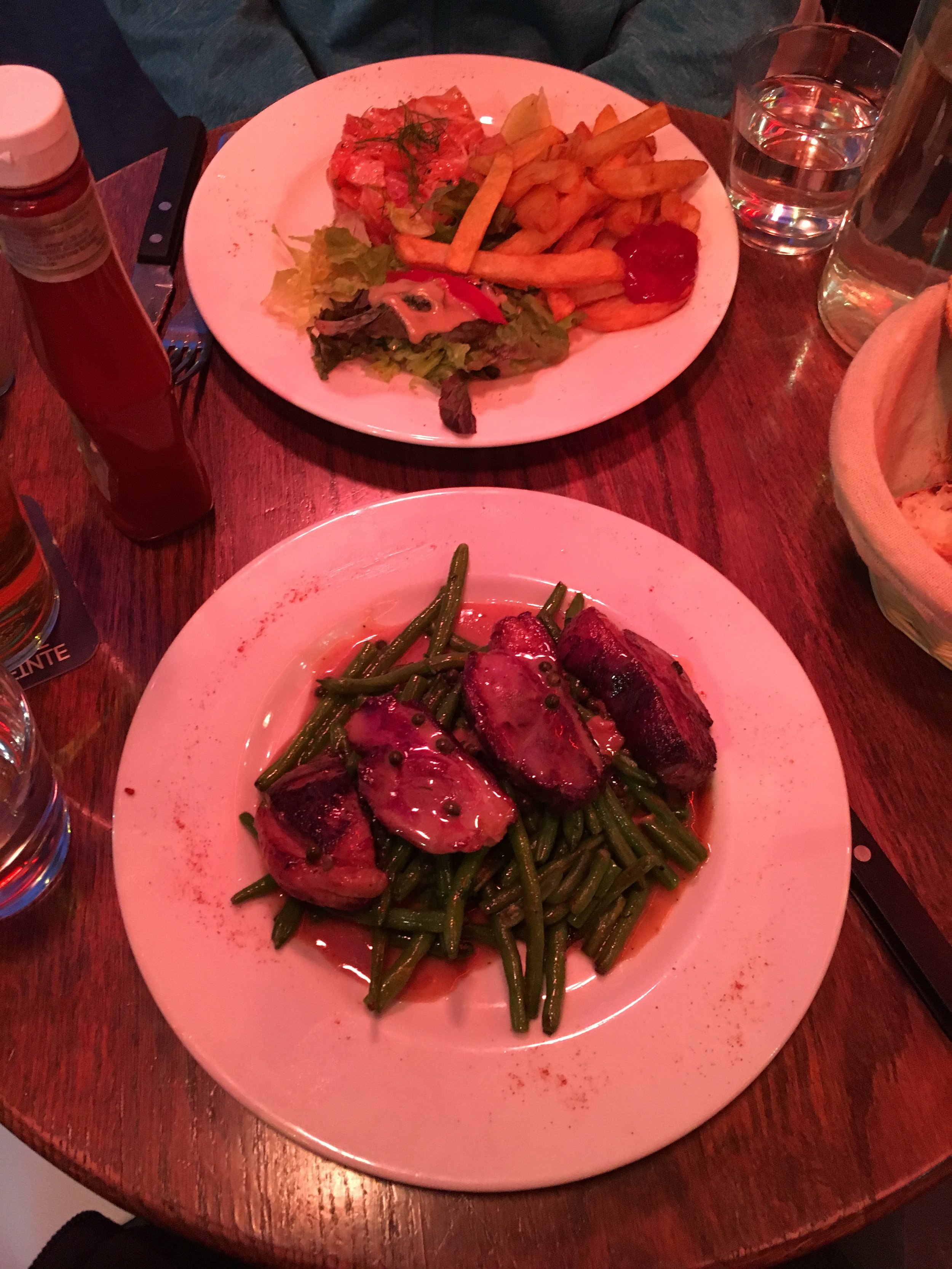Foundations of Food Along the Way
It's amazing to experience the flow of worldly cuisines. From Paris, Berlin, Vienna, Prague, Budapest, Barcelona-->Morocco, Jordan, India, Nepal-->Myanmar, Thailand so far, and hopefully looking forward to Cambodia, Malaysia, Indonesia, Hong Kong, and Japan. How people cook relates immediately to what ingredients are available to them within their area. I had a great time walking to the market in Kathmandu and just grabbing things to make a dish back for the family we were staying with.
I've been most surprised at how little meat needs to be in every dish you cook. Back home (USA), it's tough to imagine cooking a dish without a protein of some sort (1 cup of rice has 4.3 g of protein). Now, I can't wait to cook back home, and not worry about putting meat into a dish to feel satisfied. I've learned more cooking techniques, and so many more spices to cook with. Being able to utilize a wok is such an advantage in flavor building along the way, and also is very resourceful.
Below are pictures and flavor profiles I've found along the way. Certainly not perfect as most of these are indeed shared among everyone. Just what I've found traveling along. Western food is so boring!!!!...
Please add any comments to further break these profiles down.
Ingredients we share:
Onion, Garlic, Bell Peppers, Salt/Pepper, Carrot, Cabbage, Eggs, Avocado, Cilantro, dark greens, root vegetables, red chili flakes, fish, chicken
Western:
Butter, olive/vegetable oil, rosemary, thyme, corn, potatoes, apple, peach, tomato, shallot, cream, cheese, ketchup, mayo, wheat, beef, pork
Middle east:
Ghee, sunflower oil, ginger, cardamom, masala spice mix, saffron, tumeric, paprika, cumin, olive oil, olive, yogurt, chickpeas, lentils, potato tomato, cucumber, eggplant, rice, cabbage, citrus fruit, paneer, heavy vegetables, lamb
Far east:
Sesame oil, ginger, red and green chilis, green onion, rice wine vinegar, bean sprouts, lemongrass, kimchi, coconut milk, fish sauce, soy sauce, pork, rice, tofu
Hopefully the Far East pictures keep expanding in the upcoming posts!!
More thoughts:
Cheese is looked at entirely different.
Paneer in Indian dishes are huge, granted, but artisanal cheeses are lacking everywhere in Asia. A large part of this turns out to be an intolerance for lactose dating back hundreds of years.
Cheese is another absent item missing from these parts.
Wheat, Rice, and Corn (the big 3)
Everyone eats rice. But the further east you go, they seriously eat their rice. In some cultures the ratio moves to 4:1 rice over vegetables/meat. I'm used to maybe an even amount of rice to the main dish.
Wheat is used in all basic bread making. One of the most striking differences (are from what I've heard westerners miss the most) is rising bread. This requires an oven, and is something that requires a lot of energy and is missing across a lot of these communities towards the east. Bread found in these regions are flat breads: Naan, dosa, and roti are a few examples. Naan is thrown onto the sides of a Tandoor oven. Chapati is fried into a wok. Roti can just be heated onto a dry skillet/wok.
Within the far east, croissants are actually making a big surge within cultures.
And of course West and East will always share their love for noodles.
I've been pleasantly surprised to see so much corn being roasted on the street in every country I've been to. A lot of corn production goes into energy production and livestock feed, but it definitely is still shared on the plate of all cultures. My favorite meal back home are "peaches and cream" corn on the cob with butter, and a tomato sandwich from the garden. Can't get much better.
Potatoes
Everyone loves their potatoes. A bit less in the far-eastern countries, but it's still prevalent. Anything that can fry that good and be salted, cultures will make it. Also more traditionally in stews. You can throw anything in a stew.
Pickles
Anyway you way you want to do it, pickling has been around for centuries. Everybody pickles. A great way to preserve and get that tangy flavor profile onto a plate.















































